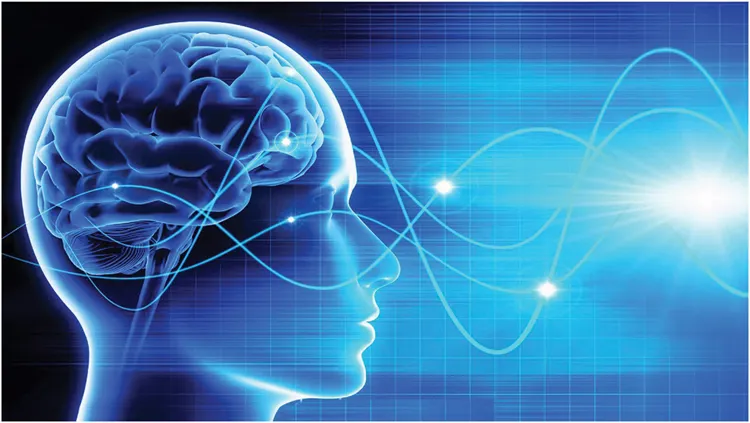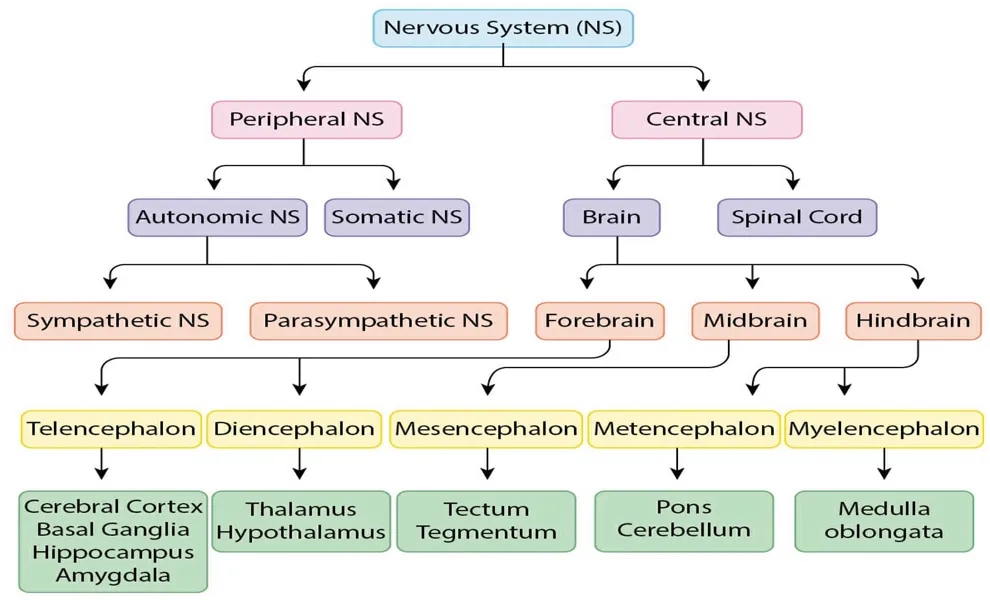
eBook - ePub
Environmental Pollution and the Brain
Sultan Ayoub Meo
This is a test
Compartir libro
- 324 páginas
- English
- ePUB (apto para móviles)
- Disponible en iOS y Android
eBook - ePub
Environmental Pollution and the Brain
Sultan Ayoub Meo
Detalles del libro
Vista previa del libro
Índice
Citas
Información del libro
Environmental pollution is an emerging global public health problem of both developing and developed nations. Such pollution is a major risk factor for many illnesses, including nervous system disorders. This book combines the highlights the effects of environmental pollution on brain biology. It will be a thorough overview of the pathophysiological and oxidative stress mechanisms and how environmental pollution affects the brain biology. The author discusses environmental pollution and brain development, memory, autism, hearing and vision loss and brain cancer. Several chapters address controversial topics such as the effect of Electromagnetic Field Radiation (RF-EMFR).
Preguntas frecuentes
¿Cómo cancelo mi suscripción?
¿Cómo descargo los libros?
Por el momento, todos nuestros libros ePub adaptables a dispositivos móviles se pueden descargar a través de la aplicación. La mayor parte de nuestros PDF también se puede descargar y ya estamos trabajando para que el resto también sea descargable. Obtén más información aquí.
¿En qué se diferencian los planes de precios?
Ambos planes te permiten acceder por completo a la biblioteca y a todas las funciones de Perlego. Las únicas diferencias son el precio y el período de suscripción: con el plan anual ahorrarás en torno a un 30 % en comparación con 12 meses de un plan mensual.
¿Qué es Perlego?
Somos un servicio de suscripción de libros de texto en línea que te permite acceder a toda una biblioteca en línea por menos de lo que cuesta un libro al mes. Con más de un millón de libros sobre más de 1000 categorías, ¡tenemos todo lo que necesitas! Obtén más información aquí.
¿Perlego ofrece la función de texto a voz?
Busca el símbolo de lectura en voz alta en tu próximo libro para ver si puedes escucharlo. La herramienta de lectura en voz alta lee el texto en voz alta por ti, resaltando el texto a medida que se lee. Puedes pausarla, acelerarla y ralentizarla. Obtén más información aquí.
¿Es Environmental Pollution and the Brain un PDF/ePUB en línea?
Sí, puedes acceder a Environmental Pollution and the Brain de Sultan Ayoub Meo en formato PDF o ePUB, así como a otros libros populares de Medicina y Neurología. Tenemos más de un millón de libros disponibles en nuestro catálogo para que explores.
Información
Chapter
01Biology of the Brain
DOI: 10.1201/9781003212461-1

1.1 Introduction
Being the main organ on which all other body systems depend, the human brain is a highly complex organ. It comprises 85–100 billion neurons, of which approximately 20 billion are found in the cerebral cortex [1, 2]. Each cortical neuron has, on average, 7,000 synaptic connections, linking different neurons and resulting in an arrangement of 0.15 quadrillion synapses and more than 150,000 km of myelinated nerve fibers [3]. The complexity of the brain is due to its biological, neuronal, hormonal, mechanical, and electrical connectivity with each cell (75–100 trillion cells) in the human body. Neuronal connections provide and control the entire physiological and biochemical actions, reactions, thoughts, feelings, memory, and experiences by coding and processing information [4].
The nervous system is the chief controlling and coordinating system that regulates all body functions and systems. It has two main divisions: “(i) the central nervous system (CNS), which consists of two parts, the brain and spinal cord, and (ii) the peripheral nervous system (PNS), which consists of cranial and spinal nerves.” The brain’s sensory part collects the signal information from the body, that is, the receptors, whereas the motor part controls the body’s responses, that is, the effectors. The higher cognitive functions of the body, including voluntary and involuntary actions, are robust and controlled by various brain centers [5–7].
Subsequently, the narrative of the neurons, receptors, and synapses is the first step toward a solicitous understanding of the basic biological and physiological principles of the CNS and PNS (Figure 1.1).
1.2 Neurons
Neurons, also known as nerve cells or nerve fibers, are the principal excitable cells of the nervous system, playing a major role in receiving, processing, and transmitting the information. Neurons are the basic biological units of the brain, spinal cord, and PNS. Being the primary functional and structural unit of the nervous system, they are supported by neuroglia and astrocytes. They are the principal elements of perception, memory, thought, and actions and the units of consciousness [8]. The two main classes of cells that make up nervous tissue are neurons and neuroglia.

Figure 1.1 Nervous system: central and peripheral nervous system.
The neurons consist of three parts: the axon, dendrite, and cell body called soma (Figure 1.2)—and are classified into unipolar, bipolar, and multipolar neurons. On the basis of the anatomical features, neurons are also classified into two types: Golgi type 1 neuron with a long axon and Golgi type 2 neuron with a short axon. However, physiologically, “neurons are classified into three types: sensory neurons, interneurons, and motor neurons.” Neurons vary in number, size, and shape. The number of neurons in the body ranges from 85 billion to 100 billion, which comprise approximately 10% of the entire brain structure [1, 2].
1.2.1 Cell Body (Soma)
The cell body (soma) of a neuron houses the nucleus, nucleolus, and other minute organelles that perform essential chemical, biological, and metabolic functions and sustain cell survival. The size of a neuronal cell body is approximately 0.005–0.1 mm. The essential minute organelles found in the neuronal cytoplasm include mitochondria, Golgi apparatus, endoplasmic reticulum, ribosomes, lysosomes, endosomes, peroxisomes, centrioles, microtubules, and microfilaments. These organelles are also found in other body cells (Table 1.1; Figure 1.3). The organelles found in a nerve cell are fundamental for the expression of genetic information that controls the synthesis of cellular proteins, energy synthesis, growth, and replacement [9, 10].
Recent studies have revealed that proteins are synthesized in the dendrites, but axons and axon terminals could not synthesize these proteins, as they do not contain ribosomes. Through the mechanism of “anterograde transport,” tiny substances are transported via microtubules along the entire length of the axon to the terminals, where they insert into the plasma membrane and other organelles and material are degraded by lysosomes [10].

Figure 1.2 Neuron.
1.2.2 Dendrites
The receiving end of the neuron or input part consists of tree-like branches of the neuronal cell body (soma), known as dendrites. The word “dendrite” was coined by William His, a Swiss anatomist, in 1889, derived from the Greek words “dendr” or “dendro,” meaning tree. The dendrite spines are small outgrowths, which further increase the receptive surface area of a neuron. They control the number, dispersal, and incorporation of inputs into a neuron and regulate the generation of the various dendrite branching patterns with distinct features of assorted types of neurons [11]. To maintain the typical characteristics of the neurons and perform function appropriately, the neurons must connect through dendrites to receive information [11]. The normal morphology of dendrites provides a physiological promise with vital functional implications in determining the types, nature, severity of signals, and their integration received by neurons. The receptor relations, signaling pathways, and cytoskeletal elements have been recognized as significant elements that contribute significantly to the organization of dendrites of different neurons [12].
The morphological and physiological characteristics of dendrites vary from those of axons [13]. Dendrites have specialized structures, such as spines, which act as the primary excitatory synaptic sites, and these structures differentiate dendrites from axons. Axons and dendrites contain additional minute organelles, including the Golgi body [14–15]. The arrangements of several cytoskeletal structures influence the process in which minute organelles and molecules are transported along the axons and dendrites [12].
1.2.3 Axons
Almost all neurons consist of a single axon, the diameter of which varies from a micrometer to a meter, in certain nerves of the human brain. Axons are usually less branched, straighter, and smoother in appearance than dendrites and have microtubules, neurofilaments, and scattered mitochondria. They play a major role in the conduction of an electrochemical impulse, called an action potential, propagating outward or away from the cell body toward the axon terminus [16].
| Organelles of Neuron | Structural Characteristics | Functional Characteristics |
|---|---|---|
| Plasma cell membrane | Similar to other cells, neuronal cells are also surrounded by a plasma cell membrane made of lipids bilayer and proteins. It is composed of an inner and an outer layer. The lipid layer is made up of two rows of phospholipid molecules | The neuronal plasma membrane has a semipermeable membrane. It serves as a barrier to encompass the cytoplasm and organelles, has a selective role for the diffusion of certain ions and substances, and restricts others. It stores nutritional and eliminates injurious substances, and catalyzes biochemical reactions. It generates an electrical potential and conduct nerve impulse |
| Nucleus | Large, rounded with one clear nucleolus, widely scattered in the neuronal cell body (soma) | It contains genetic material; DNA synthesizes RNA from DNA and transports i... |